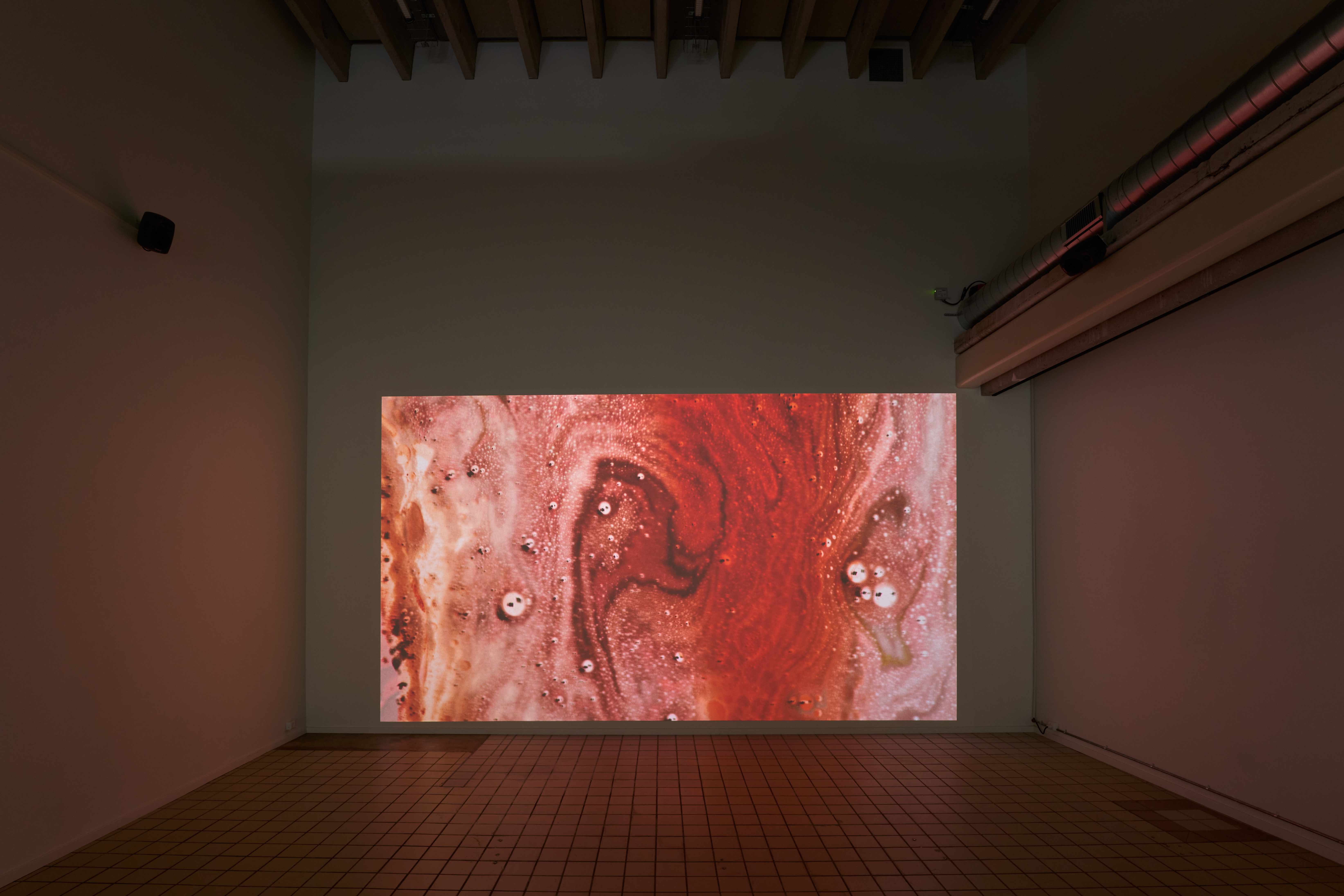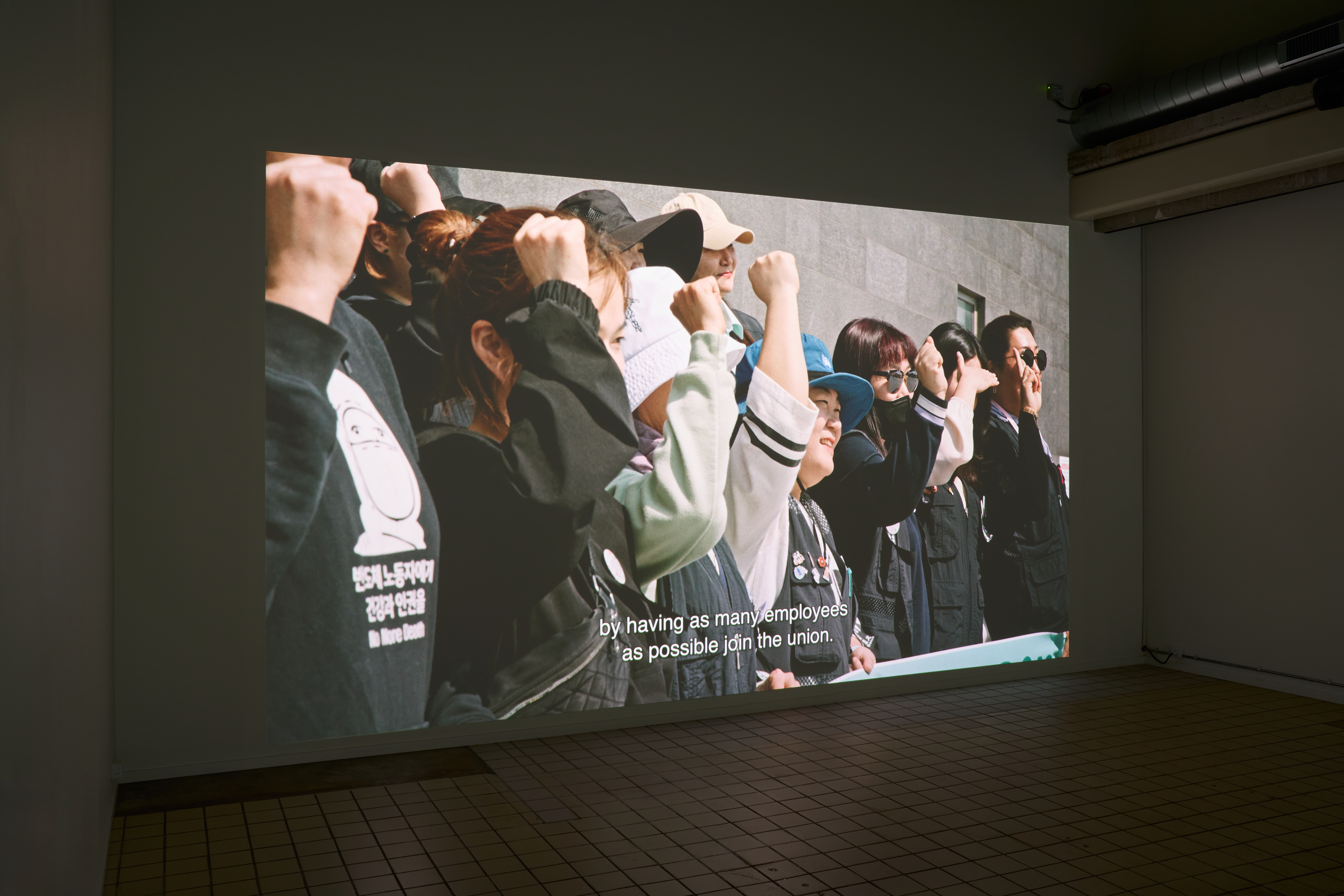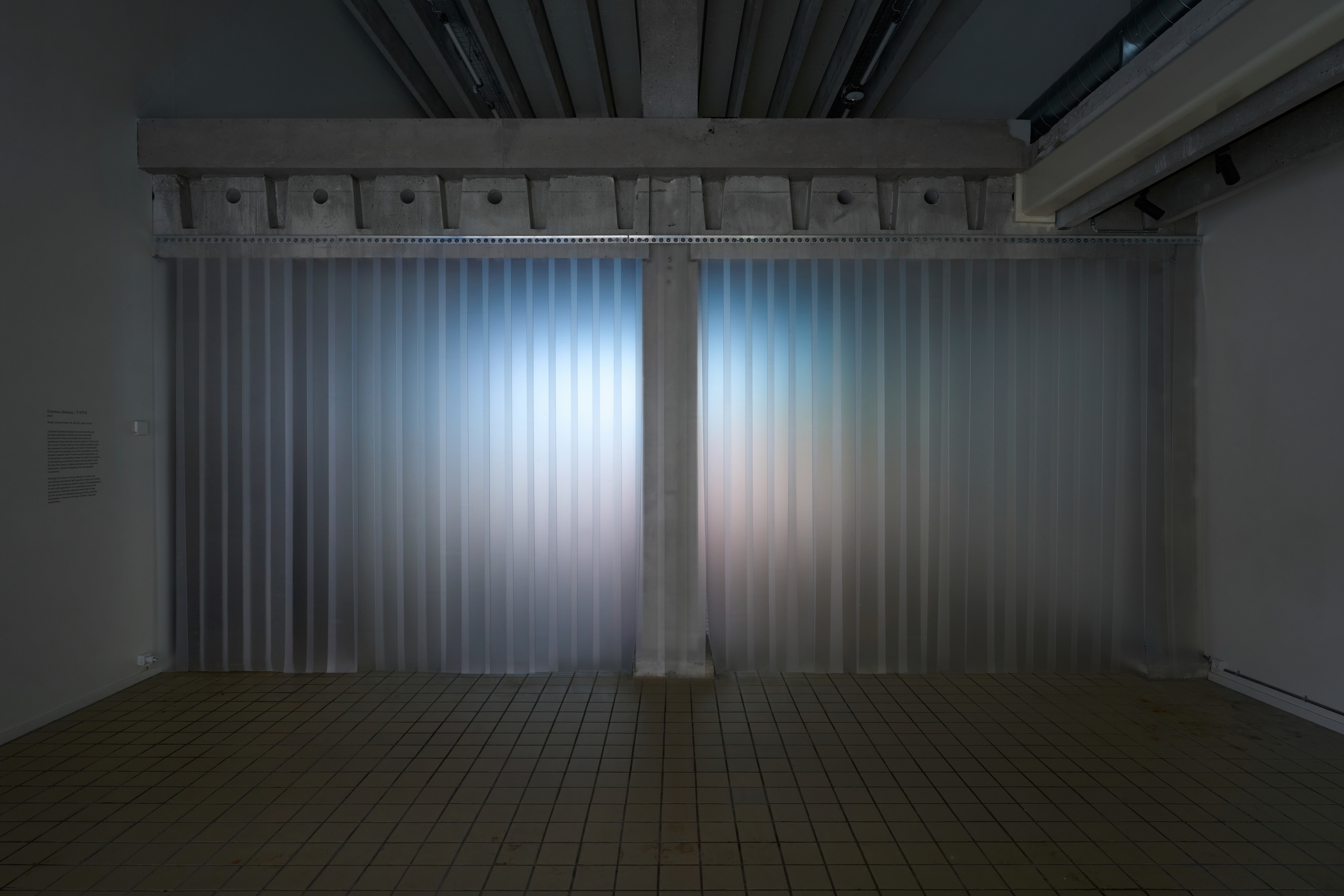Colorless, Odorless / 무색무취 / 無色無味
Single-channel video, 55min, color, sound
The key elements of electronics, such as semiconductors and display components, are produced in “clean rooms,” which are spaces where environmental conditions, including dust, are controlled. However, workers in these clean and sanitized spaces are often exposed to chemicals that are seriously hazardous to their health. Unlike immediate catastrophes, diseases caused by the accumulation of chemicals often go unnoticed and develop slowly over generations.
What was that sour-yet-sweet odor? Does "clean" mean that it only maximizes production stability while being far from body safety? Ironically, it is only the memories of the bodies and the faint smells of the substances passing through the clean rooms that prove the invisible toxicity and dangers of these cutting-edge technology sites.
Colorless, Odorless follows the work records and archival materials of victims of semiconductor biohazards to trace the smells and actions of substances that cameras cannot capture. To this end, the voices of Asian women and migrant workers, who are exposed to vulnerability, are heard. Testimonies of the past are overlaid on current symptoms, and the disaster repeats itself in other bodies and places. As multinational corporations move manufacturing plants to developing countries to lower not only labor costs but also the costs of safety standards and regulatory responses, industrial disasters are also globally transferred.
Perhaps the future is not an abstract number, but something intertwined with specific bodies and matter. As high-tech industries lead the way in the globalization of risk and exploitation in increasingly outsourced workplaces, Colorless Odorless attempts to map out the terrain of solidarity among victims, activists, and workers' unions in the face of these risks and exploitation. (Written by Shinjae Kim)
전자제품의 핵심 요소인 반도체와 디스플레이는 먼지를 비롯한 제반 환경 조건이 통제되는 공간을 의미하는 ‘클린룸’에서 생산된다. 하지만 청결하게 세정 및 소독된 이 공간에서 일하는 노동자들은 종종 건강에 심각하게 유해한 화학물질에 노출되고는 한다. 즉각적인 참사와 달리 화학물질의 축적으로 인한 질병은 외관상 눈에 띄지 않은 채 세대에 걸쳐 느리게 발병한다. 시큼하기도 하고 달큼하기도 했던 냄새의 정체는 무엇이었을까? ‘청정하다’는 것은 생산의 안정적 극대화를 의미할 뿐 신체의 안전과는 동떨어진 의미일까? 아이러니하게도 최첨단 기술 현장의 보이지 않는 독성과 그 위험을 증명하는 것은 오직 클린룸을 드나들며 노동해 온, 물질이 통과하는 몸과 희미한 냄새의 기억뿐이다.
<무색무취>는 반도체 산업 재해 피해자들의 업무 기록과 아카이브 자료를 따라 카메라가 포착할 수 없는 냄새와 물질의 작용을 추적한다. 이를 위해 취약함에 노출된 아시아의 여성 및 이주 노동자의 목소리를 듣는다. 과거에 관한 증언은 현재의 증상에 포개지고 재해는 다른 몸과 장소에서 반복된다. 다국적 기업이 인건비뿐만 아니라 안전성 기준 및 규제 대응 비용을 낮추기 위해 제조 공장을 개발도상국으로 이전함에 따라 산업 재해 또한 전 지구적으로 옮겨진다. 미래는 추상적인 숫자가 아니라 구체적인 몸과 물질 사이에 얽힌 무언가가 아닐까? 작업은 첨단 기술 산업이 점점 외주화되는 노동 환경의 위험과 착취의 세계화를 선도하는 가운데, 이에 맞서는 피해자, 활동단체, 노동조합의 연대의 지형을 그려본다. (작품 설명: 김신재)
Still Images








Installation View


